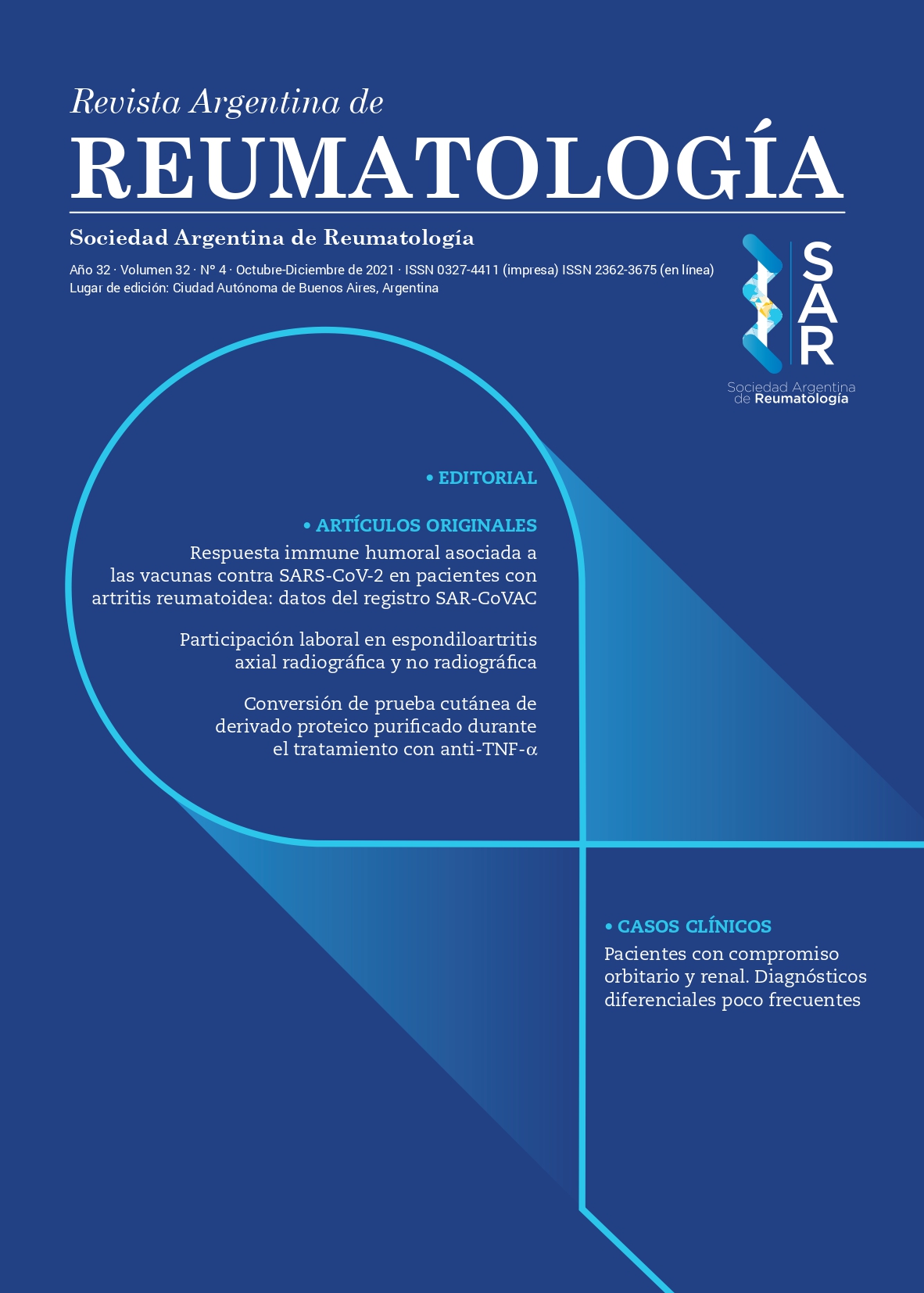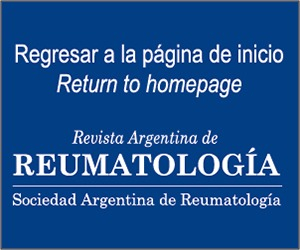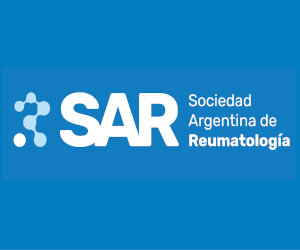Skin test conversion of purified protein derivative during treatment with anti-TNF-α
Abstract
Introduction: anti-TNF-α are associated with an increased risk of developing tuberculosis (TB). Purified protein derivative (PPD) is used to demonstrate a latent TB infection (LTBI). Screening is recommended for TB prior to the onset of anti-TNF-α and monitoring evaluating possible conversion of PPD during treatment. Treatment of LTBI can reduce the risk of active disease development by up to 90%. Objectives: currently the results of PPD conversion and its interpretation during anti-TNF-α treatment are variable and that is why we set out to know the frequency of conversion of PPD in this group of patients in our environment.References
I. Carswell EA, Old LJ, Kassel RL, Green S, Fiore N, Williamson B. An endotoxininduced serum factor that causes necrosis of tumors. Proc Natl Acad Sci U S A 1975; 9(72);3666-3670.
II. Koo S, Marty FM, Baden LR. Infectious complications associated with immunomodulating biologic agents. Infect Dis Clin North Am 2010; 24(2):285-306.
III. García-Doval I, Hernández MV, Vanaclocha F, Sellas A, de la Cueva P, Montero D; BIOBADADERM and BIOBADASER study groups. Should tumour necrosis factor antagonist safety information be applied from patients with rheumatoid arthritis to psoriasis? Rates of serious adverse events in the prospective rheumatoid arthritis BIOBADASER and psoriasis BIOBADADERM cohorts. Br J Dermatol 2017 Mar;176(3):643-649.
IV. Rosa J, Sabelli M, Soriano ER. Prefilled certolizumab pegol (Cimzia®) syringes for self-use in the treatment of rheumatoid arthritis. Med Devices (Auckl) 2010;3:25-31.
V. Keane J, Gershon S, Wise RP, et al. Tuberculosis associated with infliximab, a tumor necrosis factor alphaneutralizing agent. N Engl J Med 2001; 345(15):1098-104.
VI. Brassard P, Kezouh A, Suissa S. Antirheumatic drugs and the risk of tuberculosis. Clin Infect Dis 2006;43(6):717-22.
VII. Tubach F, Salmon D, Ravaud P, et al. Risk of tuberculosis is higher with anti-tumor necrosis factor monoclonal antibody therapy than with soluble tumor necrosis factor receptor therapy: The three-year prospective French Research Axed on Tolerance of Biotherapies registry. Arthritis Rheum 2009;60(7):1884-94.
VIII. Dixon WG, Hyrich KL, Watson KD, et al. Drug-specific risk of tuberculosis in patients with rheumatoid arthritis treated with anti-TNF therapy: results from the British Society for Rheumatology Biologics Register (BS-RBR). Ann Rheum Dis 2010;69(3):522-8.
IX. Jordán R, Valledor A. Guías de recomendaciones de prevención de infecciones en pacientes que reciben modificadores de la respuesta biológica. Rev Arg Reumatol 2014;25(2): 08-26
X. Winthrop KL, Novosad SA, Baddley JW, et al. Opportunistic infections and biologic therapies in immunemediated inflammatory diseases: consensus recommendations for infection reporting during clinical trials and postmarketing surveillance. Ann Rheum Dis 2015;74(12):2107-16.
XI. Lewinsohn DM, Leonard MK, LoBue PA, et al. Official American Thoracic Society/Infectious Diseases Society of America/Centers for Disease Control and Prevention Clinical Practice Guidelines: Diagnosis of tuberculosis in adults and children. Clin Infect Dis 2017;64(2):e1-e33.
XII. Bossio JS, Fernández H, Arias S, et al. La tuberculosis en números. Boletín sobre tuberculosis en Argentina 2019;2(2):12-22.
XIII. Pai M, Behr MA, Dowdy D, et al. Tuberculosis. Nat Rev Dis Primers 2016; 2:16076.
XIV. Comstock GW. How much isoniazid is needed for prevention of tuberculosis among immunocompetent adults? Int J Tuberc Lung Dis 1999 Oct;3(10):847-50.
XV. Mazurek GH, Jereb J, Vernon A, LoBue P, Goldberg S, Castro K; IGRA Expert Committee; Centers for Disease Control and Prevention (CDC). Updated guidelines for using interferon gamma release assays to detect Mycobacterium tuberculosis infection. United States, 2010. MMWR Recomm Rep 2010:25;59(5):1-25.
XVI. WHO. Latent tuberculosis infection: updated and consolidated guidelines for programmatic management. Geneva: World Health Organization; 2018.
XVII. Targeted tuberculin testing and treatment of latent tuberculosis infection. This official statement of the American Thoracic Society was adopted by the ATS Board of Directors, July 1999. This is a Joint Statement of the American Thoracic Society (ATS) and the Centers for Disease Control and Prevention (CDC). This statement was endorsed by the Council of the Infectious Diseases Society of America. (IDSA), September 1999, and the sections of this statement. Am J Respir Crit Care Med 2000; 161(4 Pt 2):S221-47.
XVIII. Menzies D, Doherty TM. Diagnosis of latent tuberculosis infection. In: Reichman and Hershfield’s Tuberculosis, a comprehensive international approach, Raviglione MC (Ed), Informa Healthcare USA, New York 2006.; p.215.
XIX. Duboczy Bo, Brown Bt. Multiple readings and determination of maximal intensity of tuberculin reaction. Am Rev Respir Dis 1961;84:60-8.
XX. Abbate E, Ballester D, Barrera L, Brian MC, Echazarreta A, Gaitan C, et al. Consenso Argentino de Tuberculosis. Rev Arg Med Resp 2009;9:61-9.
XXI. D’Orazio A, Lencina MV. Agentes biológicos anti-factor de necrosis tumoral alfa. Actualización de las guías de práctica clínica en el tratamiento de la artritis reumatoidea. Revista Argentina de Reumatología 2013;206-207.
XXII. Joven BE, Almodovar R, Galindo M, Mateo I, Pablos JL. Does anti-tumour necrosis factor a treatment modify the tuberculin PPD response? Ann Rheum Dis 2006;65:699.
XXIII. Cascante J, Pascal I, Eguía VM, Hueto J. Diagnóstico de la infección tuberculosa. Anales Sis San Navarra 2007;30(2): 49-65.
XXIV. Mancuso JD, Mody RM, Olsen CH, et al. The Long-term effect of Bacille Calmette-Guérin vaccination on tuberculin skin testing: A 55-year follow-up Study. Chest 2017;152(2):282-294.
XXV. Menzies D. Interpretation of repeated tuberculin tests. American Journal of Respiratory and Critical Care Medicine 1999;159(1):15-21.
XXVI. Esmail H, Wilkinson R. Minimizing tuberculosis risk in patients receiving anti-TNF therapy. Annals of the American Thoracic Society 2017;14(5):621-623.
XXVII. Fuchs I, Avnon L, Freud T, Abu-Shakra M. Repeated tuberculin skin testing following therapy with TNF-alpha inhibitors. Clinical Rheumatology 2008;28(2):167-172.
XXVIII. Cerda O, Correa M, Granel A, Marcos A, Giraldo C, Rillo O, et al. Tuberculin test conversion in patients with chronic inflammatory arthritis receiving biological therapy. European Journal of Rheumatology 2019;6(1):19-22.
XXIX. Busquets-Pérez N, Ponce A, Ortiz-Santamaria V, de Agustín de Oro J, Hernández-Rico Y, Vidal I, et al. How many patients with rheumatic diseases and TNF inhibitors treatment have latent tuberculosis? Reumatol Clin 2020;13(5):282-286.
XXX. Cano-Portero R, Amillateguidos Santos R, Boix-Martínez R, Larrauri-Cámara A. Epidemiología de la tuberculosis en España. Resultados obtenidos por la Red Nacional de Vigilancia Epidemiológica en el año 2015. Enfermedades Infecciosas y Microbiología Clínica. 2018;36(3):179-186.
XXXI. Taxonera C, Ponferrada Á, Riestra S, Bermejo F, Saro C, Martín-Arranz M, et al. Serial tuberculin skin tests improve the detection of latent tuberculosis infection in patients with inflammatory bowel dsease. Journal of Crohn’s and Colitis. 2018; 12(11):1270-1279.
XXXII. Trinh H, Tabechian D. Incidence of conversion of screening tests for M. Tuberculosis (PPD, GIF‐release assay) in a metropolitan cohort of patients treated with TNF‐α inhibitors. Arthritis Rheumatol 2018;70:10.
XXXIII. Hatzara C, Hadziyannis E, Kandili A, Koutsianas C, Makris A, Georgiopoulos G, et al. Frequent conversion of tuberculosis screening tests during anti-tumour necrosis factor therapy in patients with rheumatic diseases. Annals of the Rheumatic Diseases 2014;74(10):1848-1853
XXXIV. Park J, Seo G, Lee J, Kim T, Yoo D. Positive conversion of tuberculin skin test and performance of interferon release assay to detect hidden tuberculosis infection during anti-tumor necrosis factor agent trial. The Journal of Rheumatology 2009; 36(10):2158-2163.
Copyright (c) 2021 Intellectual property rights: authors. Reproduction rights: Argentine Society of Rheumatology

This work is licensed under a Creative Commons Attribution-NonCommercial-NoDerivatives 4.0 International License.










